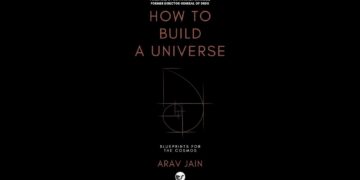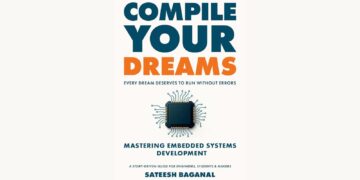
A Thought-Provoking Guide to Employee Engagement
In the modern corporate world, employee dissatisfaction, burnout, and disengagement have become alarmingly common. With the average individual spending 90,000 hours of their life at work, it’s crucial that this time fosters growth, purpose, and fulfillment rather than stress and frustration. Making of a Mindful Employee: From Existing in the Job to Living the Job by Bharat Prasad and Lalita Sanwal dives deep into this issue, offering a fresh perspective on employee engagement and workplace transformation.
More than just a management book, this guide presents a holistic framework for developing a workplace culture where employees feel valued, motivated, and empowered to contribute meaningfully. The book goes beyond the usual HR policies and productivity strategies—it emphasizes the human element of work, arguing that a truly engaged workforce is one that thinks, innovates, and thrives rather than merely completing assigned tasks.
The Core Premise: Employees Are More Than Their Resumes
One of the book’s standout messages is that an employee is not just a set of skills and experiences listed on a resume but a dynamic intellectual asset capable of problem-solving, creativity, and innovation. While technical abilities can be trained, mindful engagement fosters commitment, loyalty, and excellence.
The authors highlight key workplace issues, including:
High turnover rates due to lack of motivation and purpose
Workplace toxicity, leading to stress and dissatisfaction
Ineffective onboarding and performance management, causing disengagement
Failure to align individual growth with organizational success
By addressing these problems through real-world examples, case studies, and research-backed strategies, this book provides a roadmap for organizations to unlock their employees’ full potential.
Key Insights: A Step-by-Step Approach to Employee Engagement
One of the book’s strengths is its structured approach to understanding and improving the employee lifecycle. From the moment an employee joins an organization to their eventual exit, the book provides practical strategies for keeping them engaged and productive.
Phase 1: Onboarding & Induction
The first few weeks in a company are crucial in shaping an employee’s mindset. The book emphasizes the importance of welcoming new employees with clarity, purpose, and mentorship to ensure a smooth transition and a strong connection to the company’s mission.
Phase 2: Performance & Development
The book challenges traditional performance management methods and offers better alternatives, including:
Setting clear, meaningful goals instead of vague KPIs
Creating a feedback-rich culture that encourages growth
Providing continuous learning opportunities to keep employees engaged
Phase 3: Employee Retention & Motivation
Retention is not just about salary increments. Employees stay when they feel valued, challenged, and connected to their work. The authors suggest:
Encouraging autonomy and creativity in problem-solving
Offering mental well-being programs to reduce workplace stress
Promoting collaborative leadership instead of rigid hierarchies
Phase 4: Exit Management & Alumni Engagement
Even when employees leave, the organization can maintain a positive relationship with them. The book explores ways to turn ex-employees into brand ambassadors and future collaborators, ensuring long-term goodwill.
Who Should Read This Book?
HR Professionals & Managers – To build high-performing teams and foster workplace happiness.
Business Leaders & Entrepreneurs – To create a thriving organizational culture that attracts and retains top talent.
Employees & Job Seekers – To understand what makes a fulfilling career and how to maximize workplace satisfaction.
Students & Aspiring Professionals – To gain insights into corporate success and workforce dynamics.
The book is written in a clear, engaging tone, making it accessible to both industry experts and newcomers.
Final Verdict: A Must-Read for the Future of Work
Making of a Mindful Employee is not just a book—it’s a movement toward redefining how we perceive work and employee engagement. By blending practical strategies with psychological insights, Bharat Prasad and Lalita Sanwal offer a transformative approach to workplace culture.
The book serves as an indispensable guide for companies striving to enhance productivity while fostering a positive, innovative, and mindful workforce. Whether you are a manager, an HR professional, or an employee looking for deeper fulfillment in your career, this book provides actionable solutions to help you go beyond just “existing” in a job—it helps you truly live it.

















